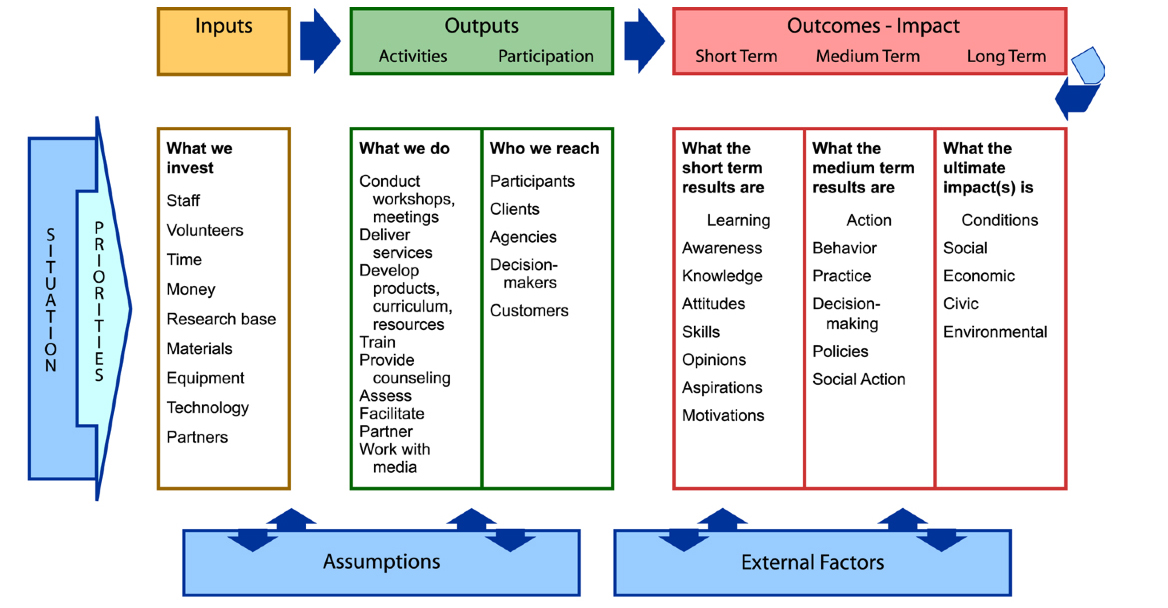The 5 Step Approach to Evaluation: Designing and Evaluating Behaviour Change Interventions SUMMARY
A shorter (updated) version of full guidance describing how to use the 5-Step approach to design and evaluate any behaviour change intervention.
Step 3: Draw a logic model
Show how the project should work:
Clear links between resources, activities and
outcomes
What are logic models?/Who can use them?
What are logic models?
Logic models are step-by-step diagrams which simply
show:
- What you're hoping to achieve in the long run (long-term outcomes)
- The process (short and medium term outcomes) through which your planned activities can be expected to lead to long-term aims.
- What resources will you need to do this (inputs)
Who can use them?
Anyone who is planning activities with particular aims in
mind can benefit from using a logic model. This includes funders
and commissioners, who might use them to plan how to assess
applications and allocate funds in pursuit of their overall aims,
as well as organisations and individuals planning behaviour change
projects or services.
A Logic Model Template TO USE

This blank template can be found here:
http://www.uwex.edu/ces/pdande/evaluation/evallogicmodel.html
A project-level logic model
The following logic model shows how a fictitious project, aimed to increase young women's physical activity levels is expected to work. It is based on international evidence about 'what works' to promote active lifestyles, particularly for young women (see the Helptful Resources chapter). It shows clear links between activities and the expected outcomes, based on what research studies tells us.
This model is quite general, "real life" service providers should be a bit more detailed about the evidence they have used to design and deliver the intervention and also describe the content of activities in more detail.

Contact
There is a problem
Thanks for your feedback